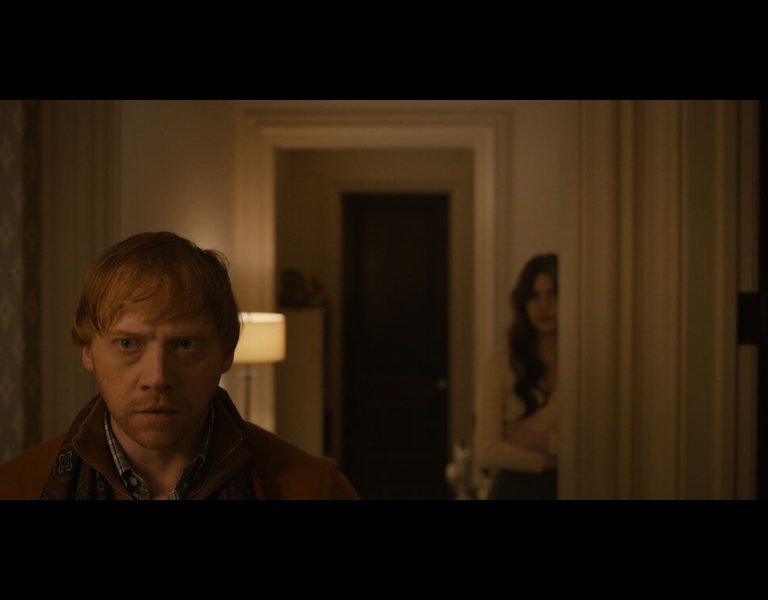Cabin fever
The apocalypse comes knocking in master of thrills M. Night Shyamalan’s trope-twisting horror. Cinematographer Lowell A. Meyer, who shares a DP credit with Jarin Blaschke, reveals how he helped craft the film’s spine-chilling visuals.
The haunted-cabin-in-the-woods cliché gets an M. Night Shyamalan-style makeover in Knock at the Cabin. The prolific writer-director’s gripping 15th feature plays out at a forest lodge, where couple Andrew and Eric (Ben Aldridge and Jonathan Groff respectively) and their eight-year-old daughter Wen (newcomer Kristen Cui) are enjoying a peaceful break until four unexpected visitors call by. Shot on a range of KODAK VISION3 stocks, Knock at the Cabin reunites Shyamalan with his beloved celluloid, a medium that helps set his work apart from others in the horror sphere.

Another fan of the format is cinematographer Lowell A. Meyer, who joined the project fresh from shooting season four of Shyamalan’s Apple TV+ series Servant. “Film is where I started – it’s the initial kernel of my filmmaking origin story,” the DP smiles. “My photography background came from shooting on my father’s SLR, a Canon AE-1. It taught me a lot quickly, because my first roll came back from the lab completely black!”
After graduating from Boston’s Emerson College, Meyer moved to Los Angeles and dedicated himself to working his way up through the ranks of the camera department. His perseverance paid off when he was asked to lens Jim Cummings’ 2018 comedy-drama Thunder Road, which won that year’s SXSW Grand Jury Award. Also in 2018, Meyer joined frequent collaborators Celine Held and Logan George to lens Caroline, which was the only US short in Competition at that year’s Cannes Film Festival. Held and George teamed up with Meyer on season three of Servant, which is how the DP found himself on Shyamalan’s radar.
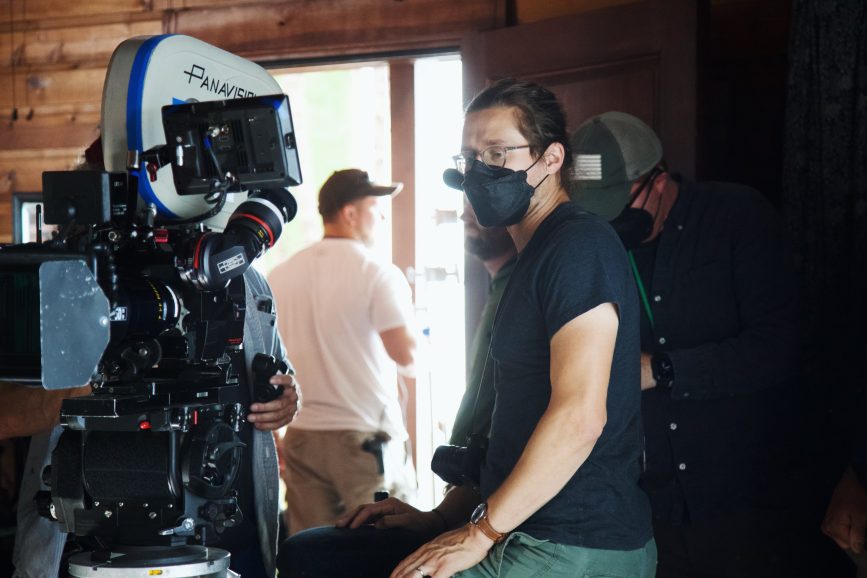
Filming for Knock at the Cabin began in spring 2022 at Sun Center Studios in Philadelphia, before moving to New Jersey’s Pine Barrens (additional photography was tacked on later on in Autumn after initial test screenings and studio notes). Meyer, whose work on the feature includes various cabin exteriors and some interior pick ups and reshoots, inherited cinematographer Jarin Blaschke’s camera package: two Panavision Millennium XL2s and a set of Close Focus Primo Anamorphic prime lenses, with the 40mm and 50mm being the hero focal lengths.
The choice of glass lent itself to shooting the seven main characters in the compact cabin set. “I think part of what makes it a claustrophobic experience is that the camera is always positioned in everybody’s faces,” Meyer explains. “It’s not a distant viewer, it’s someone who’s very much in the action. The close focus on the Primos allowed us to get a dramatic close up and still see the breadth of the cabin behind them, and/or other characters in the background.”
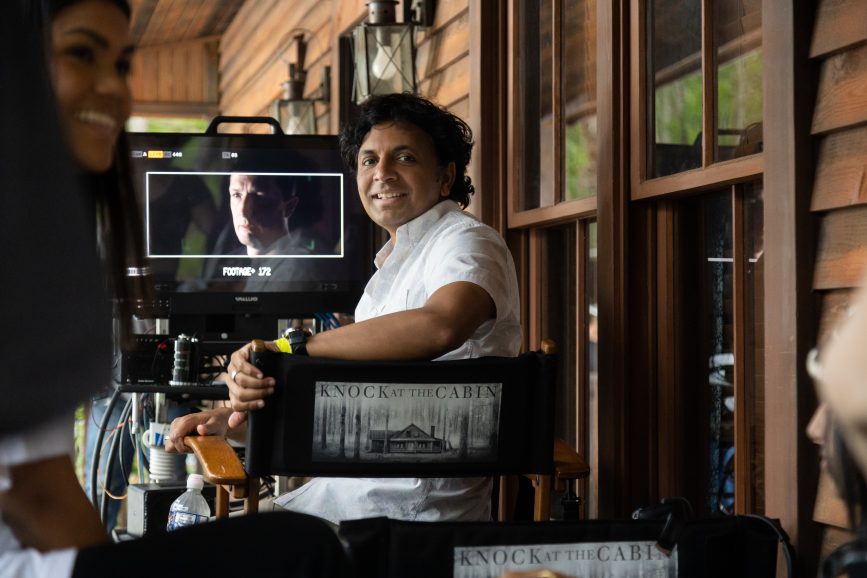
Opting to shoot on film reflected Shyamalan’s desire to give the film the feeling of a ‘90s thriller, his DP says. “Night really wanted to harken back to this time period, and this idea of a home invasion movie.”
The most-used stock on the shoot was VISION3 250D 5207/7207, which was complemented by VISION3 50D 5203/7203 for some daytime exteriors to obtain a slightly shallower depth of field. For the climactic final sequence between the husbands near the end of the film, Meyer made the creative decision to shoot on VISION3 500T 5219/7219. “[Shyamalan] understood that a lot of the cabin interiors were brightly lit and well-exposed throughout the production,” he says, “but for the final scene in the cabin, there’s an apocalypse brewing just outside: nowhere is safe. And emotionally-speaking, the cabin should be the darkest we’ve seen it because this is [the husbands’] darkest moment, when they have to make a really awful decision.”
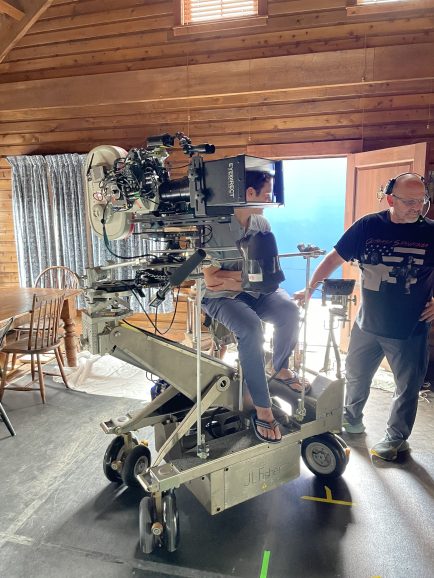
500T was also chosen due to a technical requirement Meyer needed to fulfil. “We shot this final scene breaking the fourth wall using the EyeDirect Mark II, this prosumer documentary device. It’s a little mirror box that you put in front of the lens that’s used for documentaries so that the director can sit next to the camera. But employing it eats a stop of light: so, not only were we trying to make this feel like a dark scene, but the camera needed more light than normal just to get to a healthy exposure. I thought, ‘Okay, why don’t I break “the rules we’ve established?” if everything else has been shot 250D and as bright as possible, why don’t I shoot 500T and make it feel a little bit moodier, milkier and scarier?’”
As the film’s timeline spans 24 gruelling hours, it was crucial for Blaschke and Meyer to keep track of the ever-ticking clock in their lighting choices. “Jarin and Night divided the movie into six phases: afternoon, late afternoon, sunset, dusk, morning and gloom,” notes Meyer. “These were the six looks, corresponding to the narrative beats of the story, and each required their own gel concoctions, sun-to-ambiance ratios, and light placements. When we did the reshoots, it was up to me to match these as precisely as possible, using the footage and the crew’s prior working knowledge as a guide.”
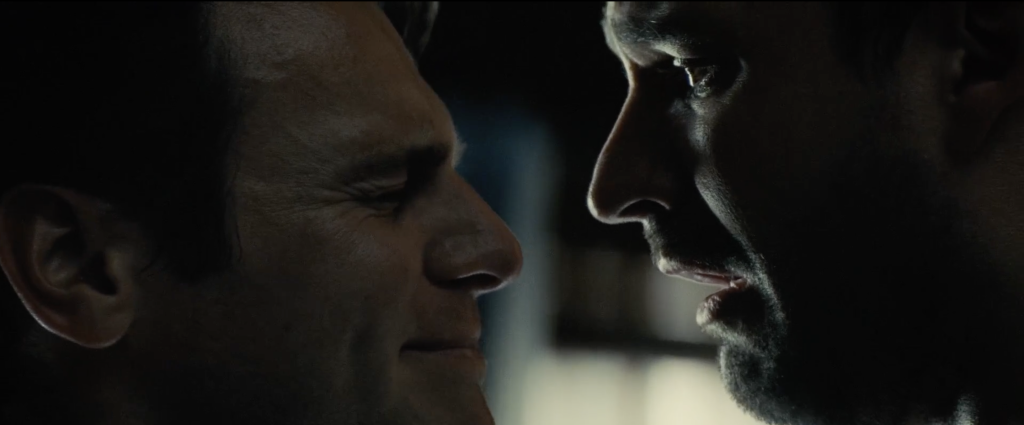
As the film stock used on the stage was daylight-based, Meyer and Blaschke’s lighting package centered around HMIs. “It just felt like it would give the truest rendition of daylight, not to mention the punch that we needed for our stage work,” Meyer says. “It was very much about replicating the real environment on a soundstage. Even the sunlight beams we created were HMIs bounced into 4×4’ mirrors that, again, had a certain CTO gel concoction on them depending on the light phase / time of day we were in narratively. Very rarely, there would be a small HMI brought into the cabin to bounce into a random corner if we were in a really dark pocket. We would also place black and white duvetyn all over the cabin to get negative and positive fill on a shot-by-shot basis. There was a lot done to augment everything as naturally as possible, without having to bring lights into the set.”
The cabin was swelteringly hot for the cast and crew, Meyer recalls, as it was packed with lights. With the cabin set being 90% lit from the outside, there were 20 18Ks and 20 9Ks surrounding it, along with a myriad of 30×20’ bounces hung overhead or playing on the ground “in every direction surrounding the cabin exterior and its windows/doors”.

Key members of Meyer’s team included A-cam operator Bradley Crosbie, dolly grip Ian O’Neill, gaffer Paul Postal, rigging gaffer Zac Kind, key grip Kimberly Stuart, and rigging key grip Rob Mock (O’Neill, Kind, Stuart, and Mock were also essential collaborators on Meyer’s episodes of Servant). The film was processed by FotoKem, while Picture Shop’s Michael Hatzer worked on the grade.
“Bradley is unbelievable,” he says. “It was my first time working with him and he quickly proved to be a valuable collaborator. He operated the Steadicam shot (where Wen is trying to flee the cabin) which meant mounting one of the heaviest camera rigs he’s ever flown. It’s a minute-and-a-half long shot, filmed at dusk, at Kristen’s eye level: he was constantly pushing the Steadi-arm down as low as it could go without going into low mode – but he crushed it.”
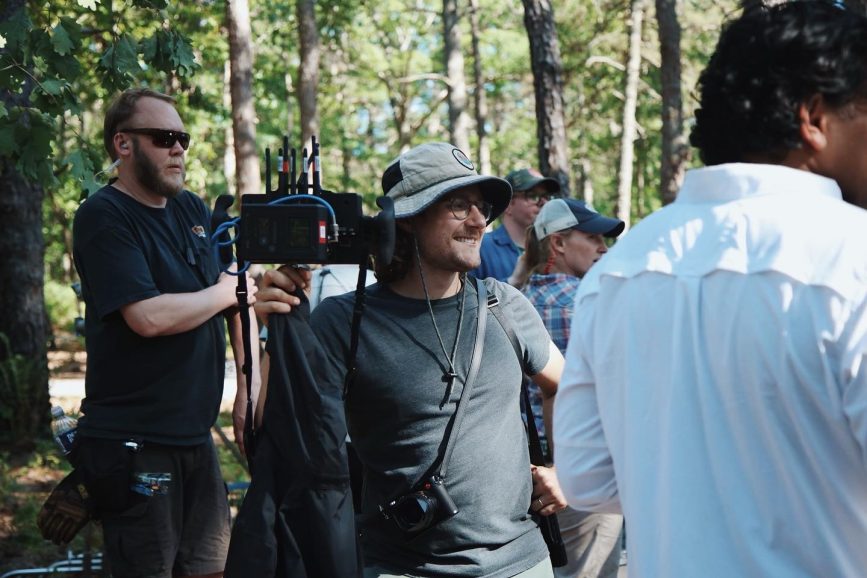
What made the hair-raising Steadicam shot even more impactful was that Shyamalan isn’t normally the rig’s biggest fan (he much prefers traditional tools like dollies and tripods). However, when the action moves from the cabin’s claustrophobic interiors to the great outdoors, using Steadicam gave the filmmakers an advantageous creative tool. “He thinks it’s a bit of a crutch for filmmakers because it’s a tool that can be imprecise and easily over-utilised; you’re never going to get the exact frame twice,” says Meyer. “It’s not like a dolly where you have a mark, and it can’t go past that mark – it’s much more loosey-goosey. But based on the practical and creative elements at play for this particular scene/shot, I feel like I got him to break his rule and we got a better shot because of it.”
Meyer is proud of rising to the challenge of co-photographing his first M. Night Shyamalan film. “Night covers his scenes with an incredible level of intention and detail. Doing so requires his DPs (and their crews) to rise to their highest degree of ability and acumen. It’s delivering that studio-level product but at an indie pace, and often with an indie mindset. It was a joy to work with him on this film, as I feel we both pushed each other and the visuals to be the most thoughtful and powerful that they could be. I think we made something extremely emotional, gripping, and cinematic, and had a lot of fun doing so at the same time (which is always the goal).”
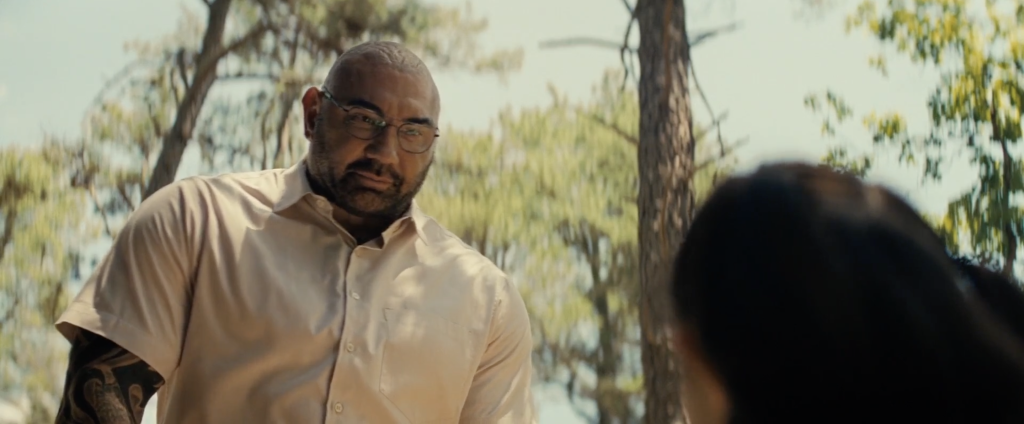
The DP was especially pleased with how the opening scene, where young Wen first meets Dave Bautista’s character Leonard, turned out. “When I first read that scene, I remember thinking, ‘What is the subtext here? I feel like something jaw-droppingly terrible is about to happen!’ It really sets the tone of the film in such a brilliant way. To be able to do that scene justice, film a really long page-count exterior scene, covered over the course of multiple days, and to make it look consistent, is a challenge in itself that I feel like turned out really well. Also, Norris Fox, our focus puller, absolutely crushed the focus on those extreme close ups.”
The DP embraced the opportunity to shoot such an exhilarating feature on film. “I think in theory, film comes off as a slow medium, but I think it just makes everybody much more practised and much smarter about their choices,” he muses. “I think that’s the thing I appreciate the most. It makes me more confident on set: ‘Yeah, this is going to result in a good image, because I put so much pre-thought into making this, I’m not going to waste a single frame.’
“That’s the other thing – it’s very precious and requires everyone to be at the top of their game. You’ll never see a first AC work harder when you’re shooting on film, and I think the same applies to DPs!”

